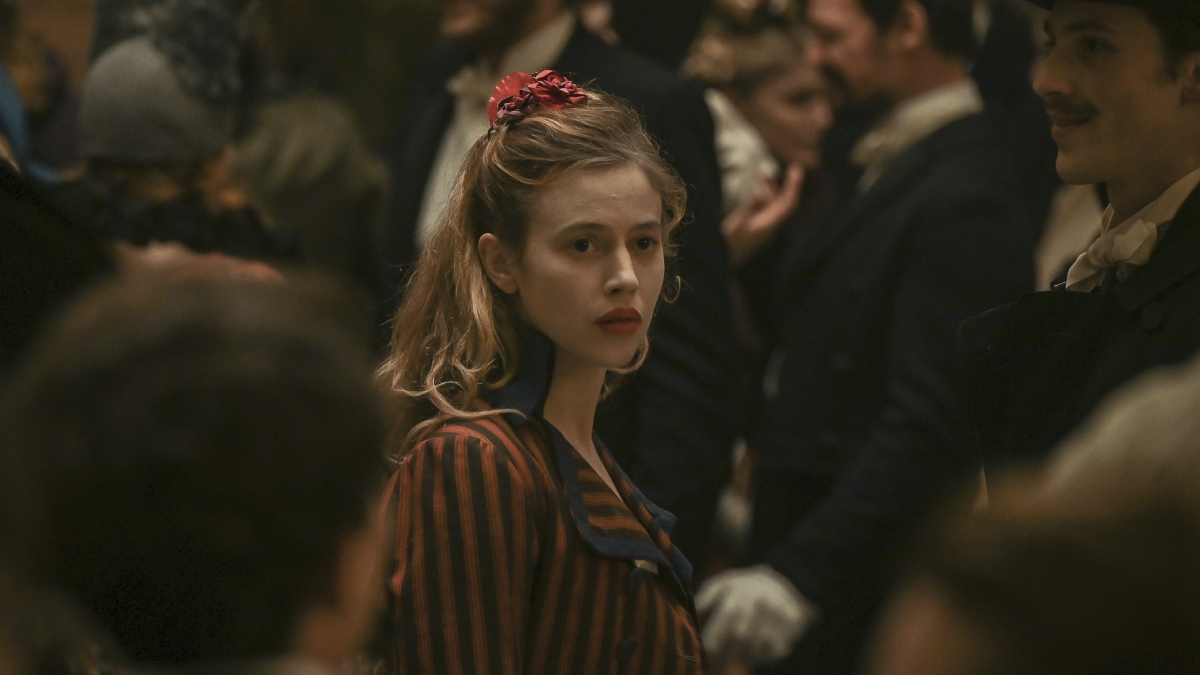For generations, women who pushed against their expected roles in life were written off as mad, and in extreme cases, locked away. For equally as long, these women were fodder for art that depicted their madness as evil. In this last century, we’ve seen contemporary women take back their sister’s agency. Like Antoinette Cosway, the madwoman in the attic from Charlotte Brontë‘s 1847 novel “Jane Eyre”, given agency by Jean Rhys in her 1966 feminist revisioning “Wide Sargasso Sea.” The same can be said for Victoria Mas, whose novel “Le bal des folles” and its subsequent adaptation, “The Mad Women’s Ball,” by Mélanie Laurent (with co-writer Christophe Deslandes) seeks to reclaim the agency of “mad” women were treated less as people and more as experiments at France’s infamous Salpêtrière mental hospital.
READ MORE: Toronto Film Fest 2021 Preview: 16 Must-See Movies To Watch
Lou de Laâge, whose ferocious performance in Laurent’s 2014 film “Breathe” landed her a César Award nomination for Most Promising Actress, leads “The Mad Women’s Ball” as Eugénie Cléry, a 26-year-old woman of good standing whose status-obsessed father seeks to control his daughter’s headstrong, independent spirit at every turn. When we first meet Eugénie she’s attending the funeral of Victor Hugo, along with 2 million others. Starting with a wide shot, filling the frame with Hugo’s mourners, Laurent slowly pans to Eugénie’s back, which she then follows in one smooth tracking shot as Eugénie returns home for dinner.
There we meet her brother, Théophile (Benjamin Voisin). The two share a close bond. Eugénie keeps his sexuality a secret, while he helps her secretly visit the burgeoning intellectual and bohemian escape that was Montmartre in the late 1880s. We also learn that Eugénie has another secret—she is visited by the spirits of the dead. During these visitations, her body becomes rigid, then convulses like an epileptic fit. When Théophile betrays her condition to their parents, Eugénie finds herself committed against her own will at Salpêtrière. As she arrives, and nearly for the rest of the film, Laurent fills the soundtrack with distant screams of women, a cacophony of agony and resistance. Run by the icy Jean-Martin Charcot (Grégoire Bonnet), whose now-controversial clinical demonstrations were attended by the likes of Sigmund Freud, and filled with a myriad of women whose diagnoses run the gamut from depression to schizophrenia to Down syndrome to just plain exhaustion at the dreariness of womanhood.
READ MORE: Fall 2021 Movie Preview: 60+ Must-See Films
Laurent is unflinching in her depictions of the early psychological treatments used on these women, from locking them in ice-cold baths for hours to deprivation of light while in solitary confinement. One particularly squirm-inducing moment culminates in the doctor pulling a speculum out of Eugénie that looks more like a metal talon than it does a medical tool. But amongst these bleak conditions, Eugénie finds solace with her fellow patients who form a bond, knowing the only way to survive is to find strength in each other. Solace and connection is also found in the head nurse, Geneviève (Laurent), who at first seems as clinical as the rest of the staff, but who is slowly revealed to be just about the only person to treat the patients with empathy and compassion.
De Laâge’s large, expressive eyes imbue Eugénie with a rich interior throughout the film. At first, we see the fire in these eyes as she longs for independence from her family, to pursue her intellectual curiosities. Later, as she spends more time at Salpêtrière, we see in them the struggle to not lose her spirit despite the harsh reality in which she now lives.
READ MORE: The Best Films Of 2021, So Far
Laurent’s arc as a cold woman of science into a believer as she connects with Eugénie, who claims to be in contact with Geneviève’s deceased sister, is equally as accomplished. Geneviève oscillates from steely when confronted by a fellow nurse, Jeanne (Emmanuelle Bercot), whose methods are borderline psychotic themselves, empathetic when nursing her patients, and meek when dominated by Charcot, the role is a showcase for Laurent’s ability to express multiple emotions all at the same time.
Asaf Avidan’s bombastic, chilling cello-laden score aids Laurent as she builds the film’s complex world, pulsing with the energy of women whose spirits can still find joy despite living in a hopeless place. As when the patients prepare for the titular ball, frenzying over boxes of costumes and makeup. Laurent leans heavily into the grotesque contrast of their jubilance with the disgusting exploitation of their quote-un-quote madness for the chic, rich crowd that attends. Men ply women with limited mental faculties with champagne, crossing ethical boundaries with such utter disregard it’s hard to watch.
Laurent’s portrait of women pushed to the edge of society, exploited, and tortured for the sake of progress is uncompromising and fearless. “The Mad Women’s Ball” is a love letter to the power of women, their resilience, and their grit, but also a stark reminder of how far we’ve come and how far we still have to go. In watching the flippant, cold diagnosis and treatments of the women in Salpêtrière, one can’t help but think of how many women today still struggle for adequate diagnoses or the ways in which women’s bodily autonomy in the United States is constantly under attack. With her film, Laurent reminds us to keep pushing back, and to remember we can find strength in each other. [A-]
Follow along with our full coverage from the 2021 Toronto International Film Festival here.





